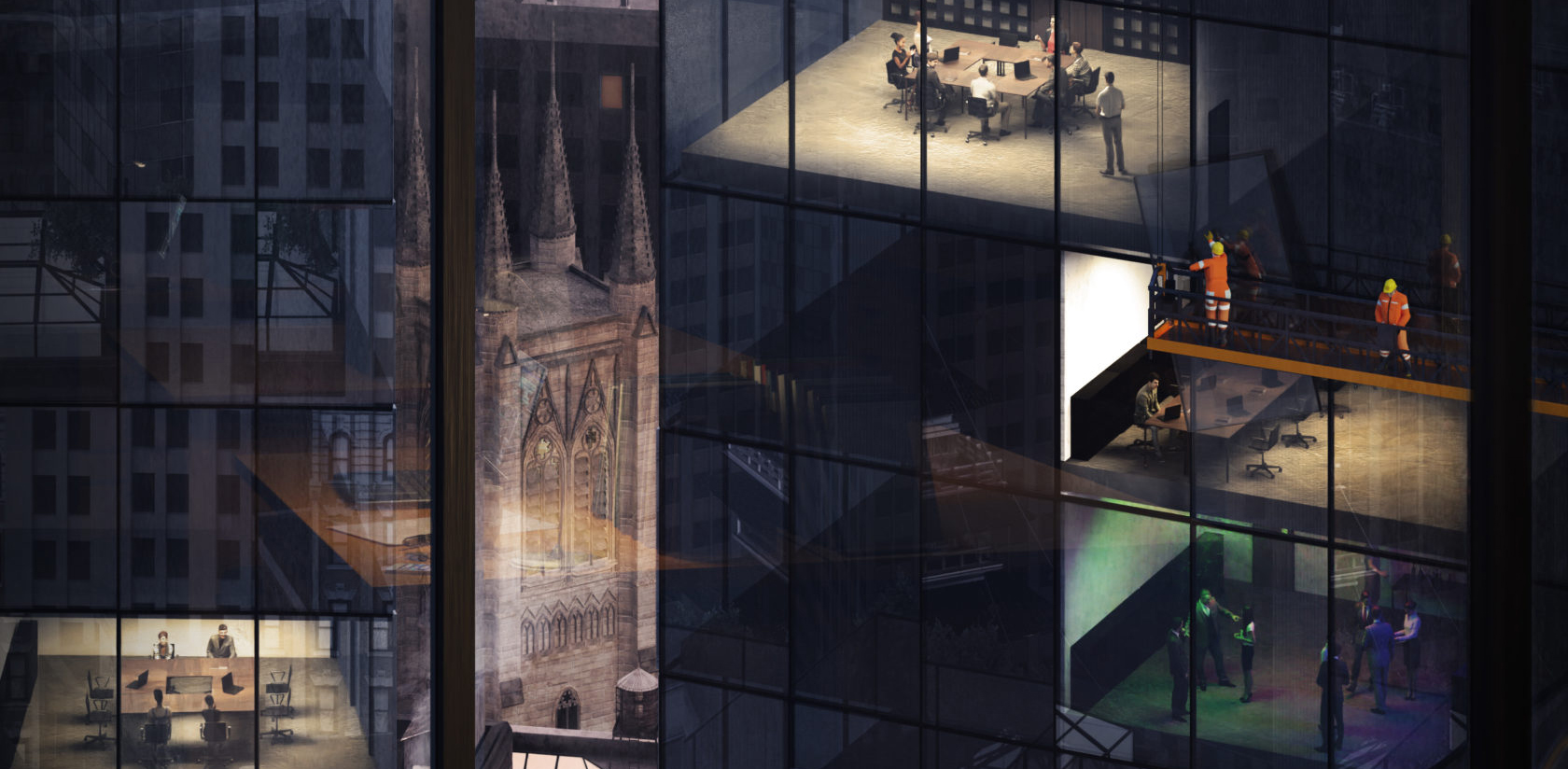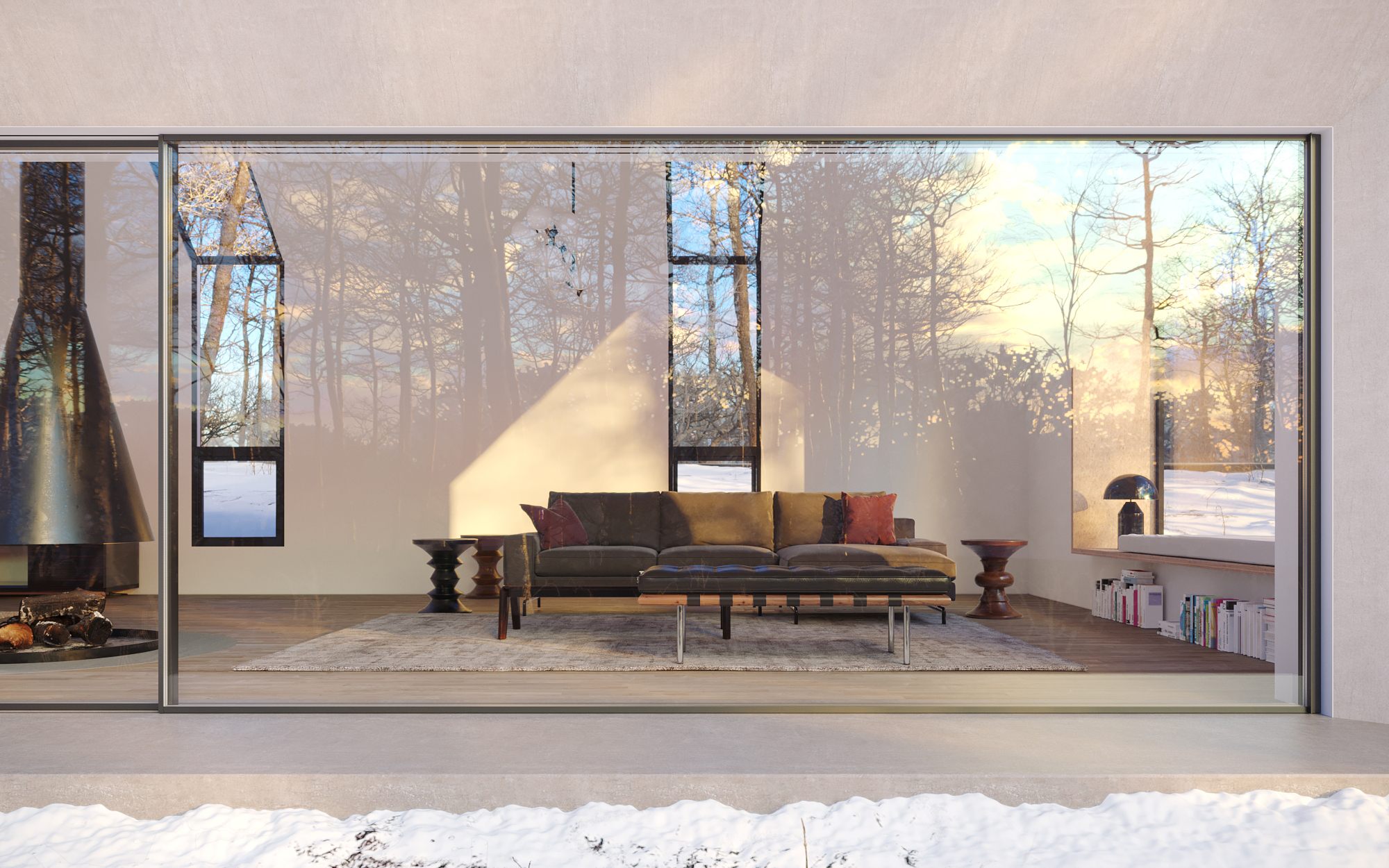Architizer is delighted to reveal the winners of the 2025 Vision Awards! We'll continue celebrating the power of architectural representation — get on the program mailing list by clicking here.
In architectural rendering, lighting is the key to making the building come to life. It becomes even more important in night scenes. Just a subtle shift in direct or indirect light sources can easily take a night scene from peaceful to creepy. If done right, it can not only glamorize a building but also showcase its emotional impact on its surroundings and those who occupy them.
Virtuosos in the realm of architectural visualization, finalists from Architizer’s 2nd Annual One Rendering Challenge skillfully demonstrate the different ways in which night scenes can be painted to create different moods, evoke memories and craft thought-provoking stories of people in today’s urban reality.
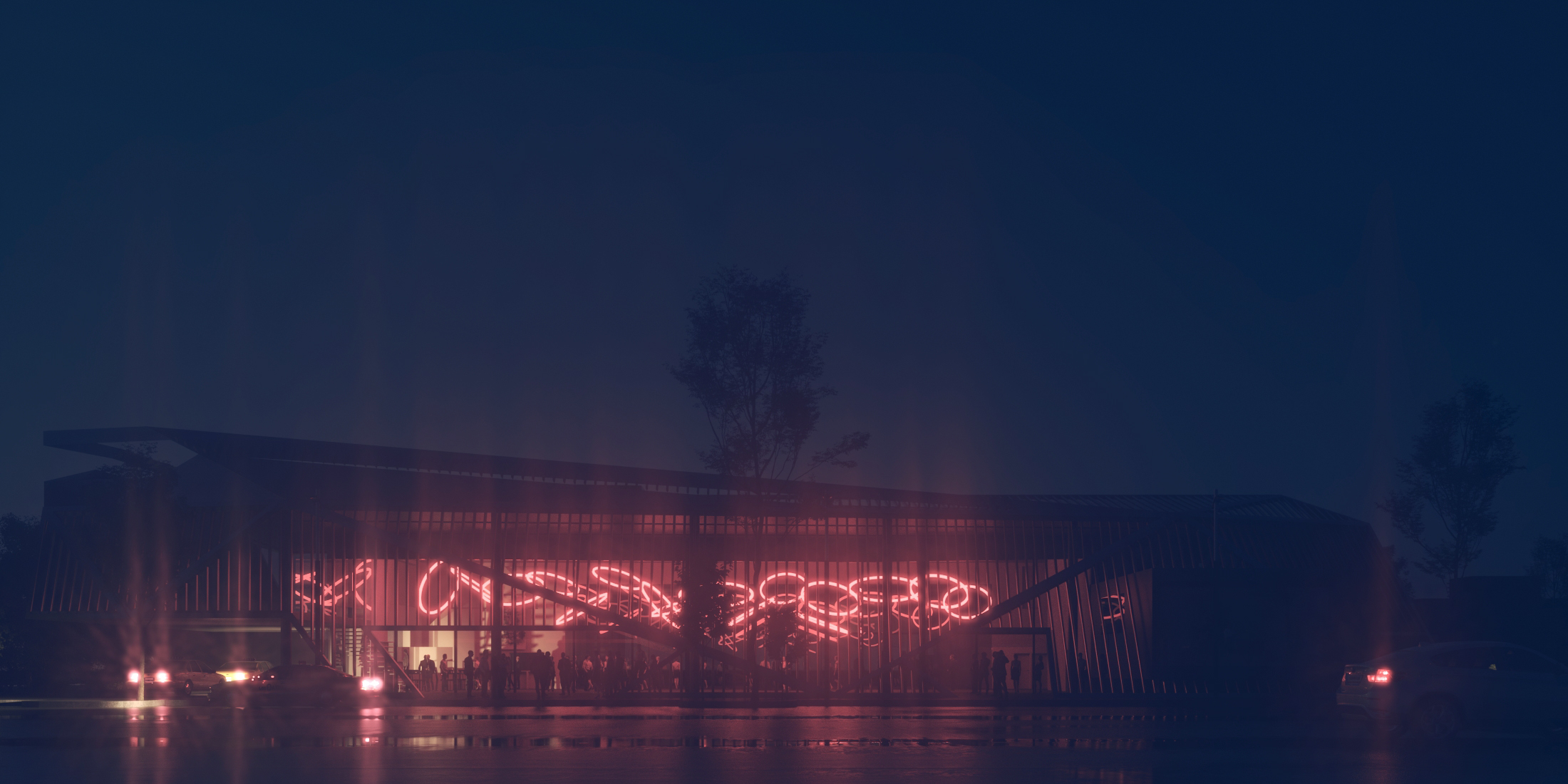 the leaf of life by Alireza Kazemirad
the leaf of life by Alireza Kazemirad
The image captures the city on a cold night, just as the sounds of the rain are slowly dying down. There is mist in the air and the streets are full of puddles that people will have to walk over as they leave the building. Kazemirad has added brightness and warmth to the cold night by using neon light fixtures within the building and combined those with a see-through façade to diffuse the light and create interesting reflections.
There are pops of yellow light on one side to keep the red from overwhelming the image. The different sources of light spreading through the foggy skies give the image dimension and evoke memories of late-night walks on a busy weekend.
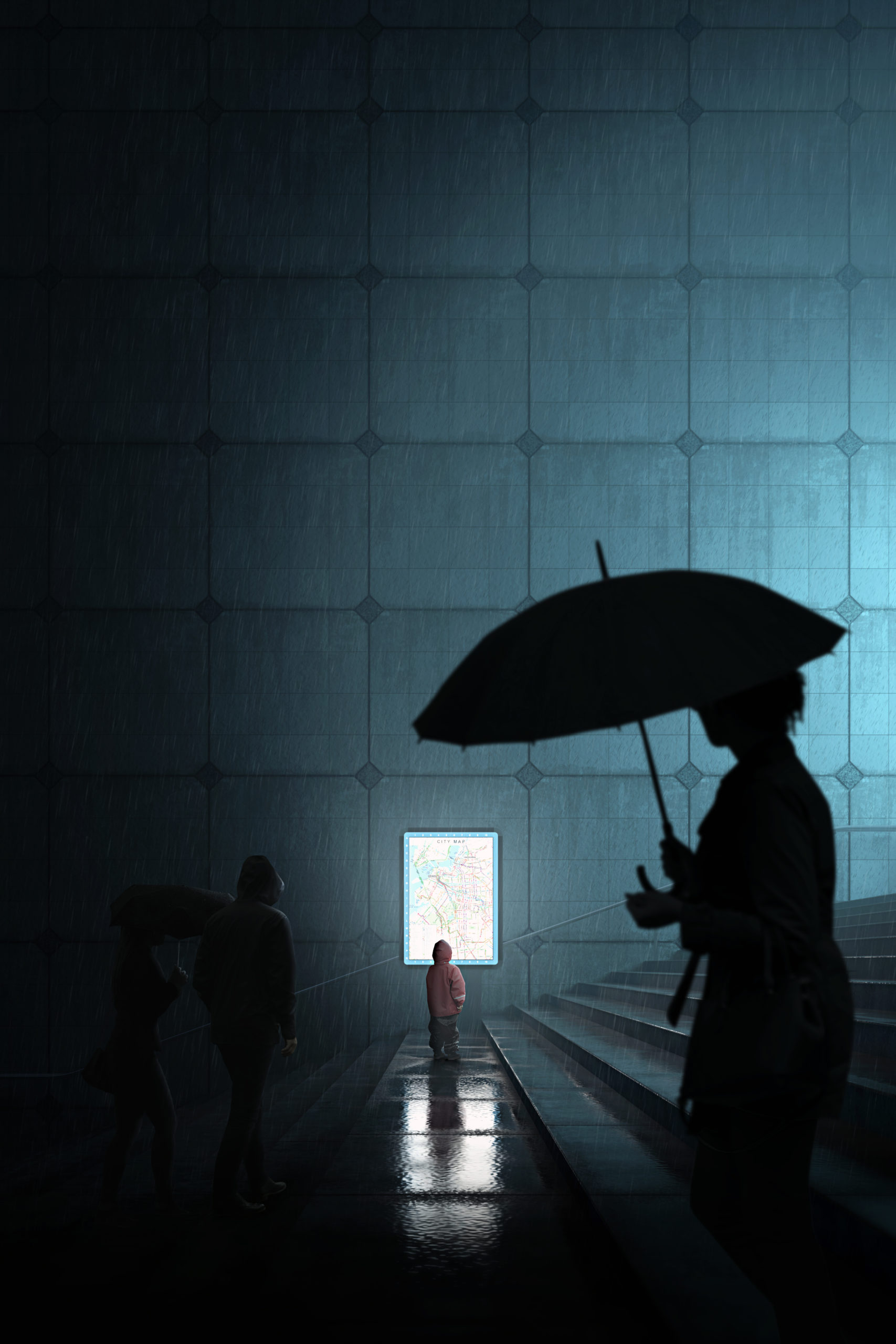 Lost by Saman Gardy
Lost by Saman Gardy
Gardy has managed to highlight every individual in the image without using a typical spotlight. The scene shows people walking on a rainy night while a child waits alone, presumably for their guardian. They have used a lucent map as a source of light to create a halo behind the child and create depth as we see this map reflected in the puddles of the water. The red of the child’s jacket, albeit dull, contrasts against the cold blue of the walls, further isolating the character from the others in the frame.
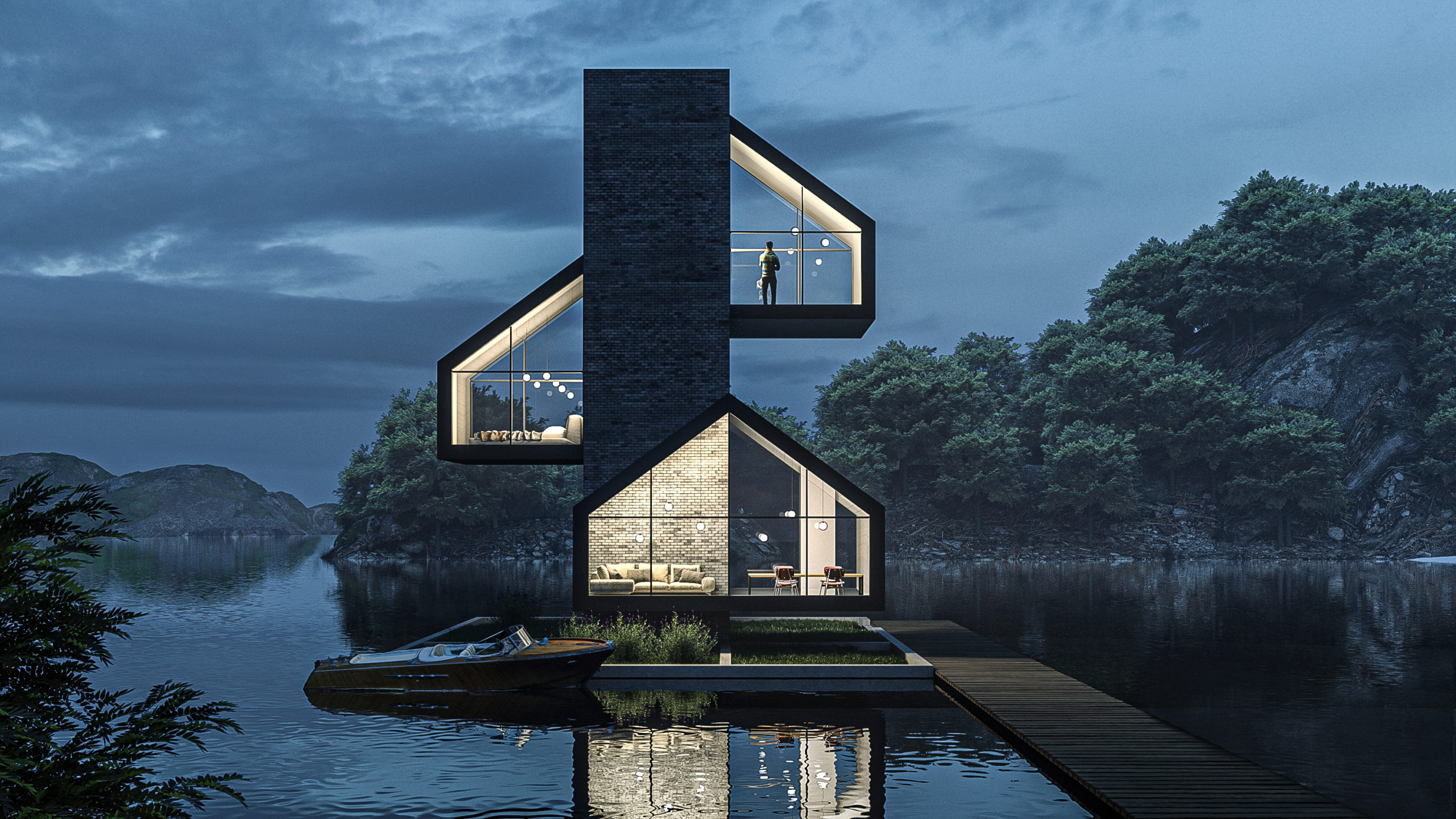 The House in the Water by Gianlorenzo Petrini
The House in the Water by Gianlorenzo Petrini
KA architecture studio‘s C2 House is transported into a scene on a Croatian archipelago in this architectural rendering. The artist has created a story and assigned a character to the space to bring it to life. The image shows a man who creates a home for himself far away from civilization so that he can gaze at the sea in peace. The cloudy skies and murky forests create a stunning backdrop for the house. Within the home, the sparseness of furniture and neutral textures amplify the sense of seclusion and tranquility.
 Undertow by Nicolas Dagna
Undertow by Nicolas Dagna
It can be tricky to accurately show the time of the day in black and white images. In this image, where the upper portion is bright and open, it is done so by using a streetlight to illuminate a figure sitting alone on a bench. Just above that, the curved form of the grand theater in Yiwu, China acts as a glowing beacon in the dark. Tree branches and the boundary wall frame the architecture and let it take center stage. The addition of a person below also helps visualize the scale of the building.
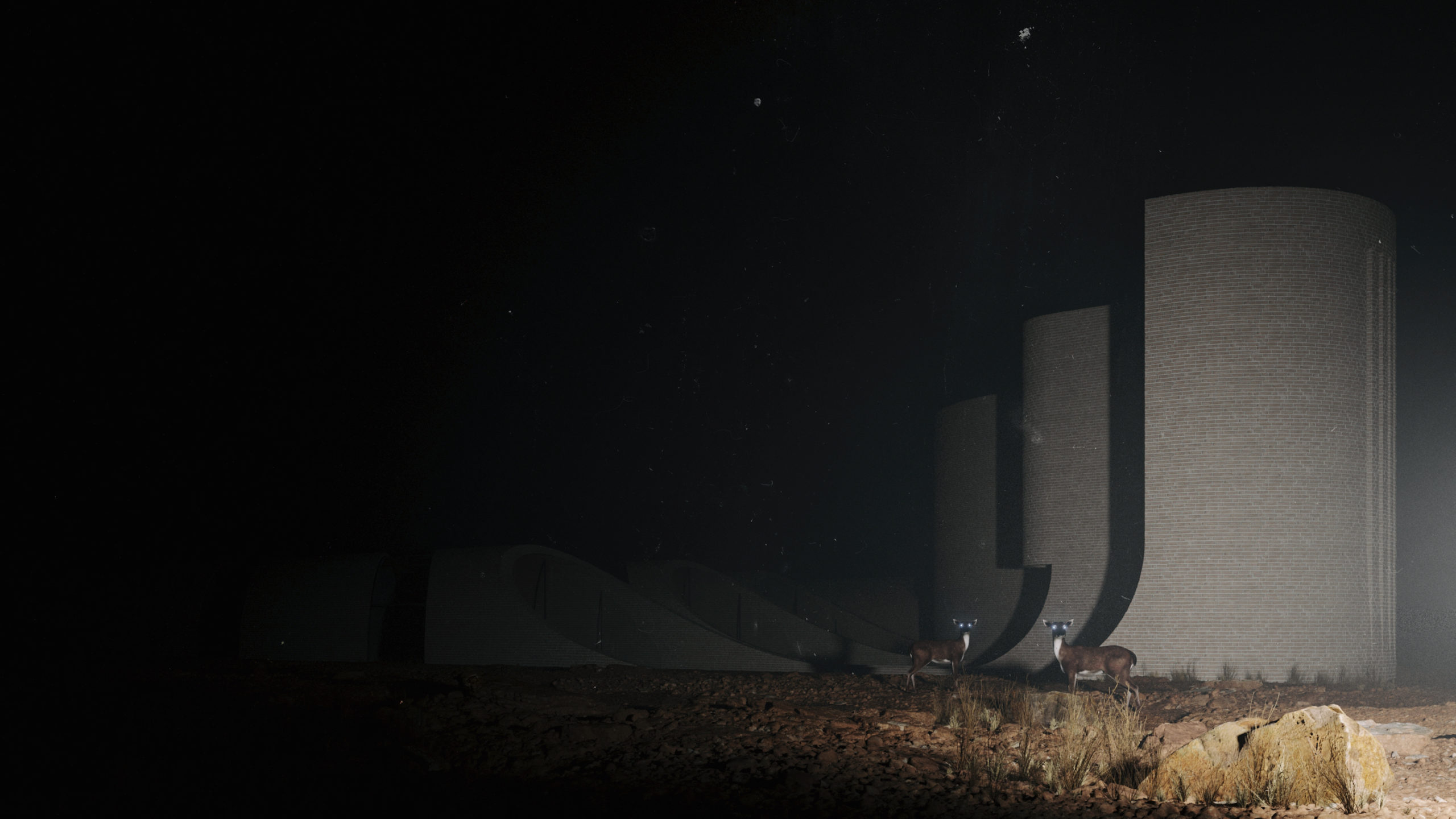 tapetum lucidum by Alireza Kazemirad
tapetum lucidum by Alireza Kazemirad
This image shows a new way of creating night-time architecture visualizations. Here, the main structure is completely shrouded by the dark and the light from the headlights of a car helps us perceive what is happening in the scene, much like one would in real life in such a setting. We get to experience a true deer-in-the-headlights moment as the car catches the two animals off guard in one of Iran’s wildlife conservation sites. They become the main focus of the image because the studio wanted to imply the superiority of nature over man-made structures. But despite that, the curved walls of the building are still clearly identifiable.
 A Brave New World by Christian Coackley
A Brave New World by Christian Coackley
Just one glance is enough to deduce that this image is straight from the future. It talks about the year 2041, when man is planning to take over the moon. The visual is both bleak and hopeful. The solid black background helps the architecture stand out and become the main hero of the image. The use of a single light source from one side also highlights every single detail in the structure. While the moon is an important part of the story, it is introduced subtly to show the distance between man and his goal both physically and metaphorically.
 Architecture; City; People by 건희 박
Architecture; City; People by 건희 박
The render can easily be an image straight out of an old photo album or someone’s memories. But apart from being a very realistic visualization, the image also poses a big question: What makes space? It talks about how it is the people that occupy these spaces that make architecture become what it is. The artist has done so without actually adding many humans but by bringing in elements that show daily activities and realities. The cloudiness in the sky, diffused lighting and low opacity of the figures used denote the quietness of a busy pocket in the city just before it gets lively again.
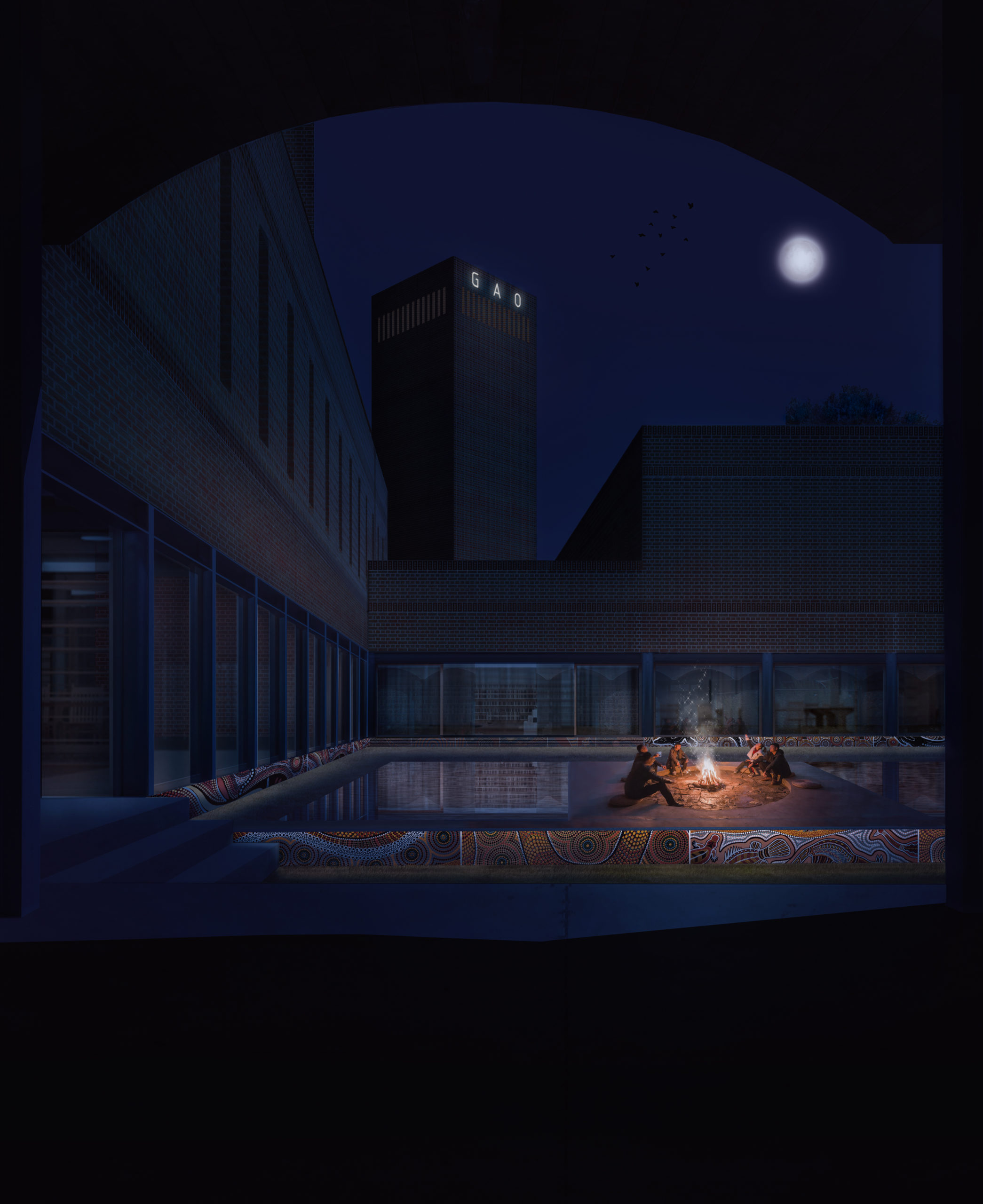 A Keeper of the Past, Present and Future by Raghav Raj
A Keeper of the Past, Present and Future by Raghav Raj
When one thinks of a fireside gathering, it is often in a forest, campground or backyard. Changing that perception, this scene is set in the proposed design for the Government Architect Office which is going to be constructed in the place of the Robb College in Armidale. The proposed building walks the line between past and present by conserving a part of the structure and adding a new office building. While the scene is painted in hues of purple and blue, the warmth from the fire adds a human touch and creates a sense of camaraderie, comfort and reminiscence. The tones of the fire also bring out the colors in the mosaic bordering the quadrangle.
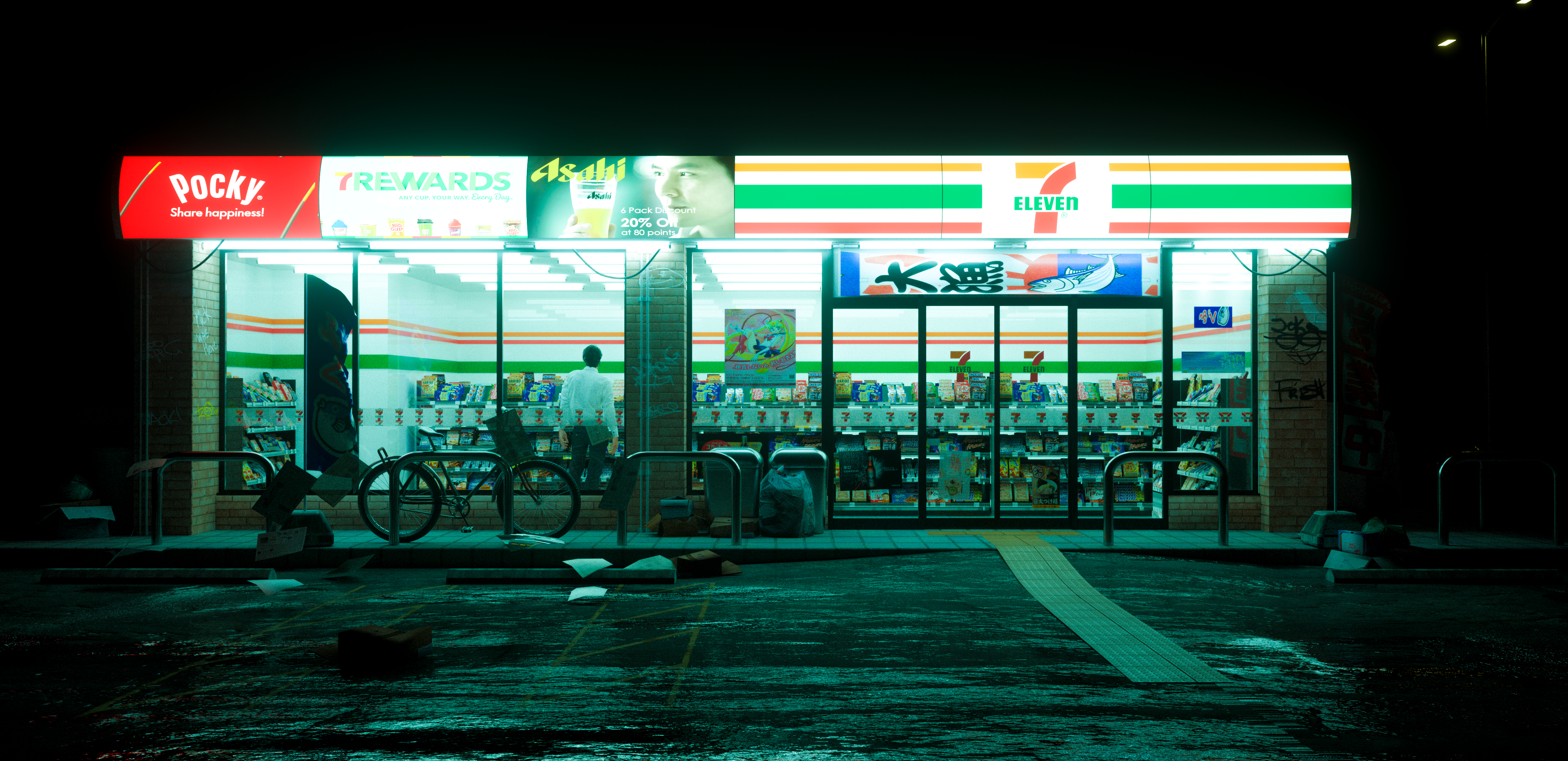 Closing Hour by Mick Charoenphan
Closing Hour by Mick Charoenphan
Despite being a night render, this picture is all light. Charoenphan paints a visual of a convenience store that acts as a safe harbor for passersby walking past it on a windy night. The brightly lit structure seems welcoming and safe, especially amid the bleakness of the scene outside. Unlike the more commonly used cool tones in nightscapes, the greenish undertones of the lighting also add tension and help make the scene appear eerier. The dimness of the streetlight also alludes to how unsettling the scene would be without the presence of this store.
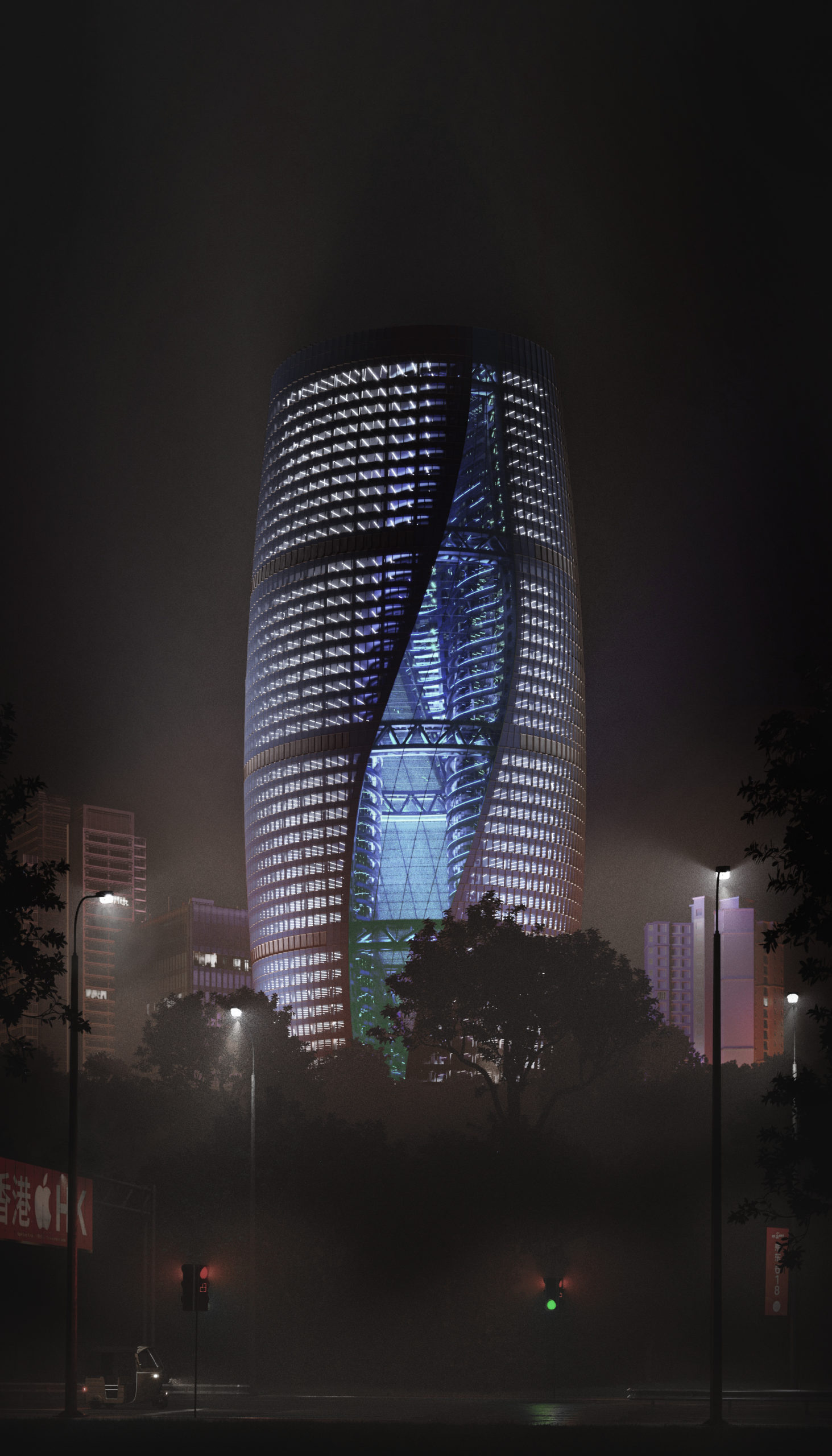 Leeza SOHO by Sergey Golubev
Leeza SOHO by Sergey Golubev
Golubev used the Zaha Hadid Architects-designed Leeza SOHO in China as the inspiration for the visual. This render was created using photos of the building and adapting it to a setting that is completely different from what is seen in the photos. Instead of creating a bustling street in the day, the artist opted for a calm scene where the building becomes the main focus. The trees at its base frame the building and the streetlights direct a viewer’s attention to the structure. Lights in shades of red, green, purple and white also add more character to the image.
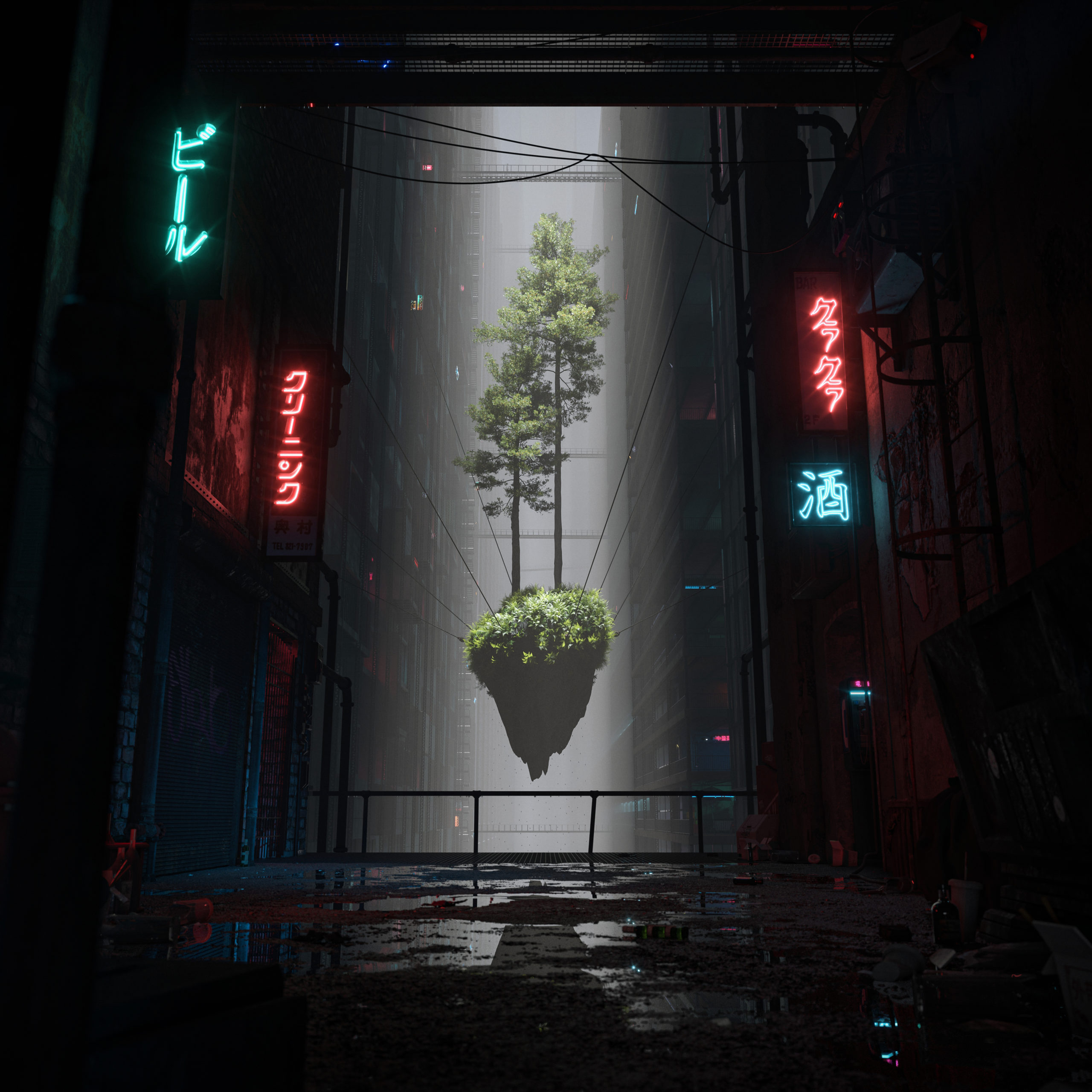 The City’s Year Forlorn by Jason Hall
The City’s Year Forlorn by Jason Hall
Drawing inspiration from Henry David Thoreau’s poem “Nature”, Hall expresses his wish to see more nature in urban landscapes. A suspended piece of a forest stands in the center of a dreary corner of a city. Weathered buildings and puddle-filled streets show the harsh realities of the city and the tree in the middle adds a breath of fresh air and a sign of hope. The incandescent red signs also help build the tension and add some color to the visual.
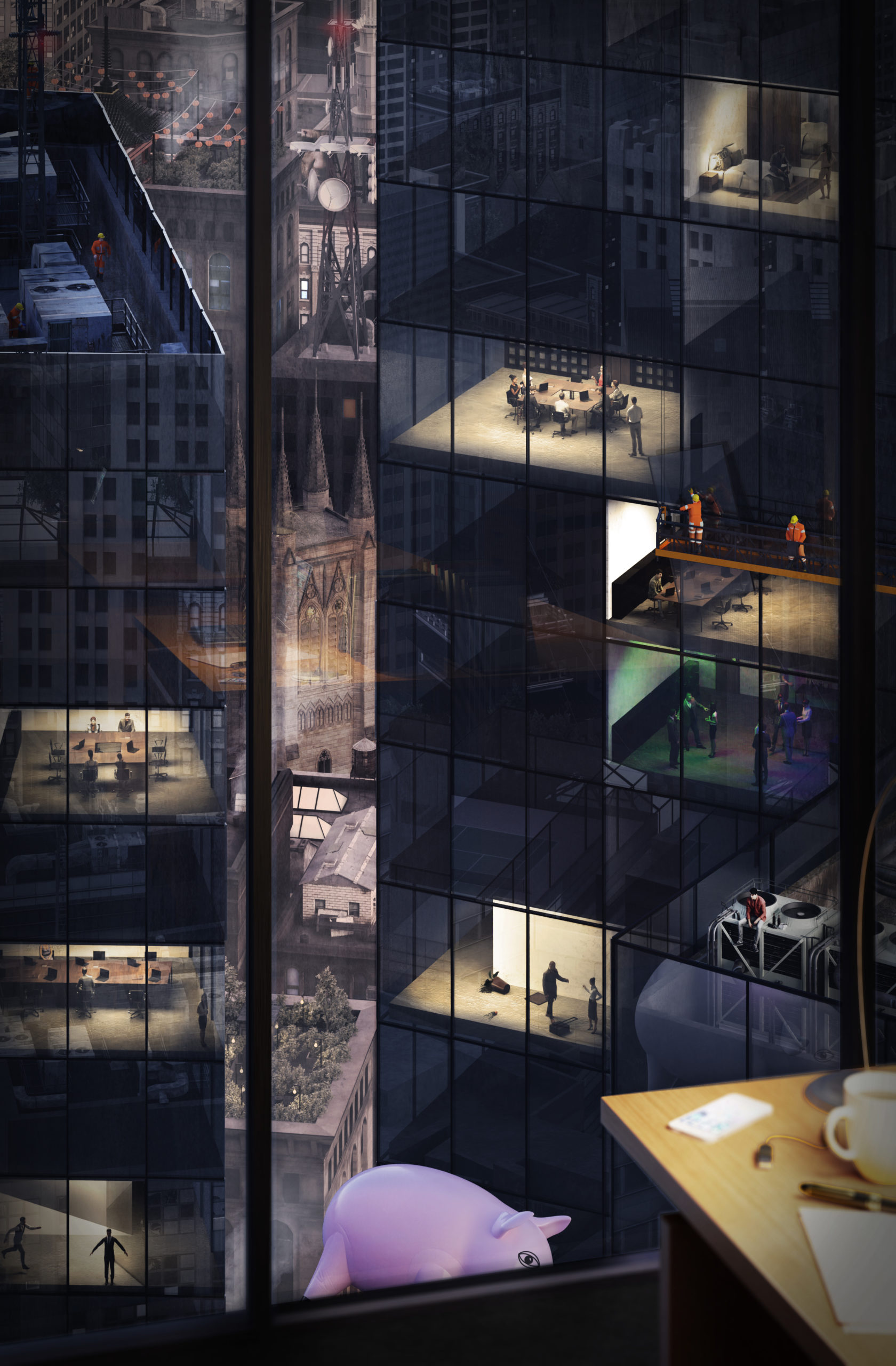 Fragments of a shattered world by Tul Srisompun
Fragments of a shattered world by Tul Srisompun
The render artfully captures the bright lights and busy lives in big cities. The whole image is broken up into smaller scenes that viewer is observing from their home, almost like a voyeur peeking into the daily happenings of families in the buildings across the street. The structures behind the two focal buildings are washed in bright light to show their details while ensuring that attention doesn’t linger on them. The play of light and reflection in the foreground creates multiple layers of meaning and visual interest. This image is a good example of how multiple sources and types of light can come together in harmony without overcrowding the image.
Architizer is delighted to reveal the winners of the 2025 Vision Awards! We'll continue celebrating the power of architectural representation — get on the program mailing list by clicking here.
